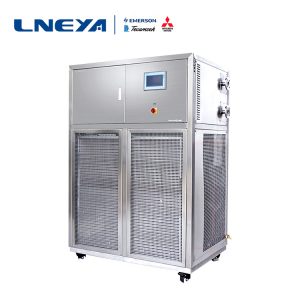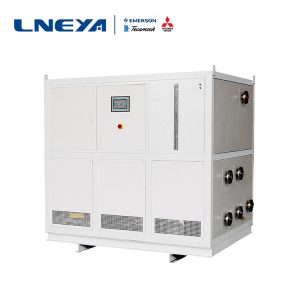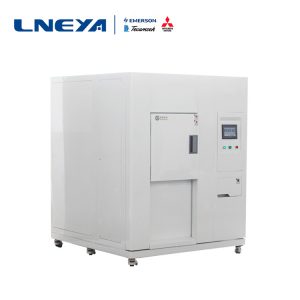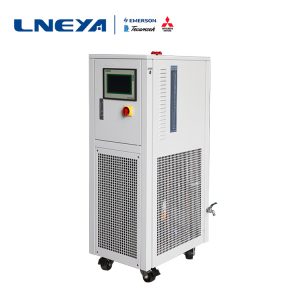LNEYA microfluidic chip test solution
The microfluidic chip test is a program for testing the drive control chip. The LNEYA microfluidic chip test device specializes in processing various chip tests, and has certain advantages for the development of the chip environment.
In order to improve the observability and controllability of each functional module, in order to verify the overall performance indicators of the chip to provide circuit structure support. The microfluidic chip test mainly consists of a screen, a driver chip, an FPC soft board, a power board, and an FPGA board. The screen and driver chip are based on practical applications, and have been soldered together during the test phase. With the screen, the driver and enable of the row and column can be visually displayed (excluding the dead pixels on the screen), and the Gamma correction for the chip, color scale The screen can be visually displayed, and the change process can be debugged online; then the screen and display control system are connected through the FPC soft board, and the screen voltage and control signal test points are reserved on the soft board; the power module realizes the display and the display on the screen. Voltage, and the total input of the driver chip power supply; the FPGA board is the control core of the entire test circuit, designing and storing some specific display effect images.
The circuit structure of the microfluidic chip test is based on the chip structure described above, and is designed with reference to its test requirements. The focus is on the power board and the FPGA board, and a power flow is provided for the entire test system to provide for each functional module. Adequate requirements for various thresholds, while preserving test points to monitor various AC and DC parameters of the driver chip. The other is to provide control and data flow of the test system, control the actions of each functional module, and independently create specific display data to verify the display effect of the driver chip.
The power supply of the microfluidic chip test system is divided into four parts: one part is the multi-channel power management VIN+5V required by the FPGA system, which is generated by the TPS5450. The second part drives the input voltage of the chip. After the LDO is stepped down, the core voltage and the 10 voltage VDDAB are generated. VDDI; three parts are the positive and negative high voltages required by AM-OLED. ELVDD and ELVSS are generated by TPS5450. The TPS5450 is characterized by different positive or negative voltages depending on the connection of the external inductor. In the fourth part, the voltage required for the level-shifting power supply is realized by the TPS65131. The power supply of the RGB row and column of the AM-OLED is adjustable from 4.6V to 6.5V, and a wide range of potentiometers can be used for flexible adjustment.
The microfluidic chip test interface is available in a variety of formats to facilitate conversion between multiple video data formats. The digital phase-locked loop is dynamically configurable to achieve clock multiplication, crossover, and phase locking, providing sufficient clock resources for the entire test system. In addition, the FPGA has a JTAG in-circuit debugging interface, which provides convenience for the configuration of the AM-OLED driver control chip register, and supports a variety of display formats and conversion functions, and provides sufficient resources for the verification of the functions of the AM-OLED drive control chip.
Microfluidic chip test as a complex control system, can also achieve the collaborative work of different modules through FPGA, can fully meet the various functional requirements of the test chip.
LNEYA microfluidic chip test mainly uses the refrigeration heating temperature control technology to conduct temperature control tests on test items and integrated circuits to meet the needs of various tests.
(Note: Some of the content is from related papers. If you infringe, please contact us in time to delete, thank you!)
Related recommendations
-
Description of pump selection in steam-saturated system temperature control unit
1610The steaming system temperature control unit is one of the more used equipment in the pharmaceutical chemical industry. The performance of the LNEYA steaming system temperature control unit depends on the design of the whole system and the specifi...
View details -
10hp freezer pipe cleaning instructions
1511The 10hp freezer is an industrial cold processing equipment from LNEYA. In the process of cooling using a chiller, if the pipeline is not cleaned properly, the refrigerator will be used, so the pipeline cleaning needs to be in place. Remove the he...
View details -
Multi-functional high and low temperature impact test chamber quality price element
1692Especially when purchasing multi-functional high and low temperature impact test chambers, the price factor often determines the quality of its products. After all, manufacturers have to survive. It is unlikely that they will sell high-quality equ...
View details -
Closed hot and cold cycle machine compressor fault repair process
1432LNEYA's closed-type hot and cold cycle machine adopts single-machine self-cascading refrigeration technology, and its compressor also uses the brand compressor, which is more stable in performance. Therefore, it is easy to choose a series of compr...
View details
 LNEYA Industrial Chillers Manufacturer Supplier
LNEYA Industrial Chillers Manufacturer Supplier
















